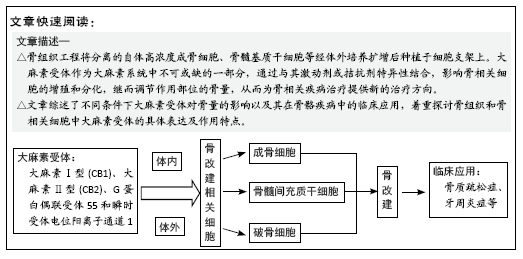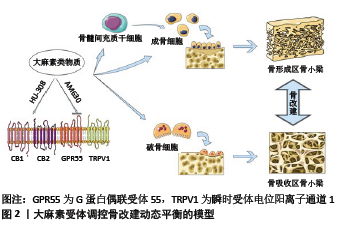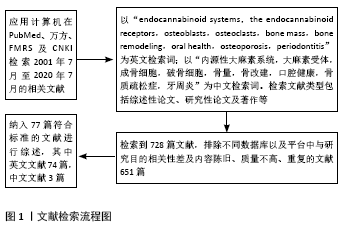[1] SALAZAR M, CARRACEDO A, SALANUEVA IJ, et al. Cannabinoid action induces autophagy-mediated cell death through stimulation of ER stress in human glioma cells. J Clin Invest. 2009;119(5):1359-1372.
[2] CAFFAREL MM, SARRIÓ D, PALACIOS J, et al. Delta9-tetrahydrocannabinol inhibits cell cycle progression in human breast cancer cells through Cdc2 regulation. Cancer Res. 2006;66(13):6615-6621.
[3] GOWRAN A, CAMPBELL VA. A role for p53 in the regulation of lysosomal permeability by delta 9-tetrahydrocannabinol in rat cortical neurones: implications for neurodegeneration. J Neurochem. 2008;105(4):1513-1524.
[4] GREENHOUGH A, PATSOS HA, WILLIAMS AC, et al. The cannabinoid delta(9)-tetrahydrocannabinol inhibits RAS-MAPK and PI3K-AKT survival signalling and induces BAD-mediated apoptosis in colorectal cancer cells. Int J Cancer. 2007;121(10):2172-2180.
[5] DEVANE WA, HANUS L, BREUER A, et al. Isolation and structure of a brain constituent that binds to the cannabinoid receptor. Science (New York, NY). 1992;258(5090):1946-1949.
[6] KUNOS G, BÁTKAI S, OFFERTÁLER L, et al. The quest for a vascular endothelial cannabinoid receptor. Chem Phys Lipids. 2002;121(1-2):45-56.
[7] PERTWEE RG. Cannabinoid receptors and pain. Prog Neurobiol. 2001; 63(5):569-611.
[8] MATSUDA LA, LOLAIT SJ, BROWNSTEIN MJ, et al. Structure of a cannabinoid receptor and functional expression of the cloned cDNA. Nature. 1990;346(6284):561-564.
[9] MUNRO S, THOMAS KL, ABU-SHAAR M. Molecular characterization of a peripheral receptor for cannabinoids. Nature. 1993;365(6441):61-65.
[10] NAGARKATTI P, PANDEY R, RIEDER SA, et al. Cannabinoids as novel anti-inflammatory drugs. Future Med Chem. 2009;1(7):1333-1349.
[11] KUPCZYK P, REICH A, SZEPIETOWSKI JC. Cannabinoid system in the skin- a possible target for future therapies in dermatology. Exp Dermatol. 2009;18(8):669-679.
[12] YATES ML, BARKER EL. Inactivation and biotransformation of the endogenous cannabinoids anandamide and 2-arachidonoylglycerol. Mol Pharmacol. 2009;76(1):11-17.
[13] BAB I, OFEK O, TAM J, et al. Endocannabinoids and the regulation of bone metabolism. J Neuroendocrinol. 2008;20 Suppl 1:69-74.
[14] BAB I. Themed issue on cannabinoids in biology and medicine. Br J Pharmacol. 2011;163(7):1327-1328.
[15] MACH DB, ROGERS SD, SABINO MC, et al. Origins of skeletal pain: sensory and sympathetic innervation of the mouse femur. Neuroscience. 2002;113(1):155-166.
[16] IDRIS AI, SOPHOCLEOUS A, LANDAO-BASSONGA E, et al. Cannabinoid receptor type 1 protects against age-related osteoporosis by regulating osteoblast and adipocyte differentiation in marrow stromal cells. Cell Metab. 2009;10(2):139-147.
[17] TAKEDA S, ELEFTERIOU F, LEVASSEUR R, et al. Leptin regulates bone formation via the sympathetic nervous system. Cell. 2002;111(3):305-317.
[18] TAM J, OFEK O, FRIDE E, et al. Involvement of neuronal cannabinoid receptor CB1 in regulation of bone mass and bone remodeling. Mol Pharmacol. 2006;70(3):786-792.
[19] IDRIS AI, VAN’T HOF RJ, GREIG IR, et al. Regulation of bone mass, bone loss and osteoclast activity by cannabinoid receptors. Nature Med. 2005;11(7):774-779.
[20] ELEFTERIOU F, AHN JD, TAKEDA S, et al. Leptin regulation of bone resorption by the sympathetic nervous system and CART. Nature. 2005; 434(7032):514-520.
[21] BUSQUETS-GARCIA A, GOMIS-GONZÁLEZ M, SRIVASTAVA RK, et al. Peripheral and central CB1 cannabinoid receptors control stress-induced impairment of memory consolidation. Proc Natl Acad Sci U S A. 2016;113(35):9904-9909.
[22] JIANG H, WU Y, VALVERDE P, et al. Central adiponectin induces trabecular bone mass partly through epigenetic downregulation of cannabinoid receptor CB1. J Cell Physiol. 2019;234(5):7062-7069.
[23] WANG L, YANG L, TIAN L, et al. Cannabinoid Receptor 1 Mediates Homing of Bone Marrow-Derived Mesenchymal Stem Cells Triggered by Chronic Liver Injury. J Cell Physiol. 2017;232(1):110-121.
[24] WHYTE LS, FORD L, RIDGE SA, et al. Cannabinoids and bone: endocannabinoids modulate human osteoclast function in vitro. Br J Pharmacol. 2012;165(8):2584-2597.
[25] TAM J, TREMBOVLER V, DI MARZO V, et al. The cannabinoid CB1 receptor regulates bone formation by modulating adrenergic signaling. FASEB J. 2008;22(1):285-294.
[26] SERRE CM, FARLAY D, DELMAS PD, et al. Evidence for a dense and intimate innervation of the bone tissue, including glutamate-containing fibers. Bone. 1999;25(6):623-629.
[27] SMITH M, WILSON R, O’BRIEN S, et al. The Effects of the Endocannabinoids Anandamide and 2-Arachidonoylglycerol on Human Osteoblast Proliferation and Differentiation. PloS One. 2015;10(9): e0136546.
[28] OFEK O, KARSAK M, LECLERC N, et al. Peripheral cannabinoid receptor, CB2, regulates bone mass. Proc Natl Acad Sci U S A. 2006;103(3):696-701.
[29] IDRIS AI, LANDAO-BASSONGA E, RALSTON SH. The TRPV1 ion channel antagonist capsazepine inhibits osteoclast and osteoblast differentiation in vitro and ovariectomy induced bone loss in vivo. Bone. 2010;46(4):1089-1099.
[30] BAB I, ZIMMER A. Cannabinoid receptors and the regulation of bone mass. Br J Pharmacol. 2008;153(2):182-188.
[31] BAB IA. Regulation of skeletal remodeling by the endocannabinoid system. Ann N Y Acad Sci. 2007;1116:414-422.
[32] SAMIR SM, MALEK HA. Effect of cannabinoid receptors 1 modulation on osteoporosis in a rat model of different ages. J Physiol Pharmacol. 2014;65(5):687-694.
[33] EGER M, BADER M, BREE D, et al. Bone Anabolic Response in the Calvaria Following Mild Traumatic Brain Injury is Mediated by the Cannabinoid-1 Receptor. Sci Rep. 2019;9(1):16196.
[34] WASSERMAN E, TAM J, MECHOULAM R, et al. CB1 cannabinoid receptors mediate endochondral skeletal growth attenuation by Δ9-tetrahydrocannabinol. Ann N Y Acad Sci. 2015;1335:110-119.
[35] ASHTON JC, FRIBERG D, DARLINGTON CL, et al. Expression of the cannabinoid CB2 receptor in the rat cerebellum: an immunohistochemical study. Neurosci Lett. 2006;396(2):113-116.
[36] 钱红,赵亚,胡静,等.大麻素受体CB2在机械牵张力介导的人牙周膜细胞成骨分化中的作用[J].中国美容医学,2012,21(13):1765-1767.
[37] QIAN H, ZHAO Y, PENG Y, et al. Activation of cannabinoid receptor CB2 regulates osteogenic and osteoclastogenic gene expression in human periodontal ligament cells. J Periodontal Res. 2010;45(4):504-511.
[38] SOPHOCLEOUS A, LANDAO-BASSONGA E, VAN’T HOF RJ, et al. The type 2 cannabinoid receptor regulates bone mass and ovariectomy-induced bone loss by affecting osteoblast differentiation and bone formation. Endocrinology. 2011;152(6):2141-2149.
[39] ZHANG M, SHI X, WU J, et al. CoCl(2) induced hypoxia enhances osteogenesis of rat bone marrow mesenchymal stem cells through cannabinoid receptor 2. Arch Oral Biol. 2019;108:104525.
[40] ZHENG W, LIU C, LEI M, et al. Evaluation of common variants in the CNR2 gene and its interaction with abdominal obesity for osteoporosis susceptibility in Chinese post-menopausal females. Bone Joint Res. 2019;8(11):544-549.
[41] 胡旭治,史新连,邓辉.大麻素Ⅱ型受体参与调控低氧微环境下大鼠骨髓间充质干细胞的骨向分化[J].温州医科大学学报,2019, 49(8):563-567.
[42] WANG B, LIAN K, LI J, et al. Restoration of osteogenic differentiation by overexpression of cannabinoid receptor 2 in bone marrow mesenchymal stem cells isolated from osteoporotic patients. Exp Ther Med. 2018;15(1):357-364.
[43] QIU S, ZHAO F, TANG X, et al. Type-2 cannabinoid receptor regulates proliferation, apoptosis, differentiation, and OPG/RANKL ratio of MC3T3-E1 cells exposed to Titanium particles. Mol Cell Biochem. 2015; 399(1-2):131-141.
[44] SCUTT A, WILLIAMSON EM. Cannabinoids stimulate fibroblastic colony formation by bone marrow cells indirectly via CB2 receptors. Calcif Tissue Int. 2007;80(1):50-59.
[45] XU A, YANG Y, SHAO Y, et al Inhibiting effect of microRNA-187-3p on osteogenic differentiation of osteoblast precursor cells by suppressing cannabinoid receptor type 2. Differentiation. 2019;109:9-15.
[46] ZHU M, YU B, BAI J, et al. Cannabinoid Receptor 2 Agonist Prevents Local and Systemic Inflammatory Bone Destruction in Rheumatoid Arthritis. J Bone Miner Res. 2019;34(4):739-751.
[47] ROSSI F, BELLINI G, LUONGO L, et al. The 17-β-oestradiol inhibits osteoclast activity by increasing the cannabinoid CB2 receptor expression. Pharmacol Res. 2013;68(1):7-15.
[48] IDRIS AI, SOPHOCLEOUS A, LANDAO-BASSONGA E, et al. Regulation of bone mass, osteoclast function, and ovariectomy-induced bone loss by the type 2 cannabinoid receptor. Endocrinology. 2008;149(11):5619-5626.
[49] SCHUEHLY W, PAREDES JM, KLEYER J, et al. Mechanisms of osteoclastogenesis inhibition by a novel class of biphenyl-type cannabinoid CB(2) receptor inverse agonists. Chem Biol. 2011;18(8):1053-1064.
[50] LUNN CA, FINE J, ROJAS-TRIANA A, et al. Cannabinoid CB(2)-selective inverse agonist protects against antigen-induced bone loss. Immunopharmacol Immunotoxicol. 2007;29(3-4):387-401.
[51] ROSS RA. The enigmatic pharmacology of GPR55. Trends Pharmacol Sci. 2009;30(3):156-163.
[52] MARAZZI J, KLEYER J, PAREDES JM, et al. Endocannabinoid content in fetal bovine sera-unexpected effects on mononuclear cells and osteoclastogenesis. J Immunol Methods. 2011;373(1-2):219-228.
[53] SOPHOCLEOUS A, IDRIS AI, RALSTON SH. Genetic background modifies the effects of type 2 cannabinoid receptor deficiency on bone mass and bone turnover. Calcif Tissue Int. 2014;94(3):259-268.
[54] BAKER D, PRYCE G, DAVIES WL, et al. In silico patent searching reveals a new cannabinoid receptor. Trends Pharmacol Sci. 2006;27(1):1-4.
[55] SMART D, GUNTHORPE MJ, JERMAN JC, et al. The endogenous lipid anandamide is a full agonist at the human vanilloid receptor (hVR1). Br J Pharmacol. 2000;129(2):227-230.
[56] SAWZDARGO M, NGUYEN T, LEE DK, et al. Identification and cloning of three novel human G protein-coupled receptor genes GPR52, PsiGPR53 and GPR55: GPR55 is extensively expressed in human brain. Brain Res Mol Brain Res. 1999;64(2):193-198.
[57] WHYTE LS, RYBERG E, SIMS NA, et al. The putative cannabinoid receptor GPR55 affects osteoclast function in vitro and bone mass in vivo. Proc Natl Acad Sci U S A. 2009;106(38):16511-16516.
[58] OSSOLA CA, BALCARCEL NB, ASTRAUSKAS JI, et al. A new target to ameliorate the damage of periodontal disease: The role of transient receptor potential vanilloid type-1 in contrast to that of specific cannabinoid receptors in rats. J Periodontol. 2019;90(11):1325-1335.
[59] GROTENHERMEN F, MÜLLER-VAHL K. The therapeutic potential of cannabis and cannabinoids. Deutsch Arztebl Int. 2012;109(29-30):495-501.
[60] Raisz LG. Pathogenesis of osteoporosis: concepts, conflicts, and prospects. J Clin Invest. 2005;115(12):3318-3325.
[61] RIGGS BL, WAHNER HW, SEEMAN E, et al. Changes in bone mineral density of the proximal femur and spine with aging. Differences between the postmenopausal and senile osteoporosis syndromes. J Clin Invest. 1982;70(4):716-723.
[62] WOO JH, KIM H, KIM JH, et al. Cannabinoid receptor gene polymorphisms and bone mineral density in Korean postmenopausal women. Menopause (New York, NY). 2015;22(5):512-519.
[63] GÜLER-YÜKSEL M, HOES JN, BULTINK IEM, et al. Glucocorticoids, Inflammation and Bone. Calcif Tissue Int. 2018;102(5):592-606.
[64] WHITTIER X, SAAG KG. Glucocorticoid-induced Osteoporosis. Rheum Dis Clin North Am. 2016;42(1):177-189, x.
[65] NATSUI K, TANAKA K, SUDA M, et al. High-dose glucocorticoid treatment induces rapid loss of trabecular bone mineral density and lean body mass. Osteoporos Int. 2006;17(1):105-108.
[66] SOSA M, JÓDAR E, SAAVEDRA P, et al. Postmenopausal Canarian women receiving oral glucocorticoids have an increased prevalence of vertebral fractures and low values of bone mineral density measured by quantitative computer tomography and dual X-ray absorptiometry, without significant changes in parathyroid hormone. Eur J Int Med. 2008;19(1):51-56.
[67] MIGLIACCIO S, BRAMA M, FORNARI R, et al. Glucocorticoid-induced osteoporosis: an osteoblastic disease. Aging Clin Exp Res. 2007;19(3 Suppl):5-10.
[68] KO JY, WU RW, KUO SJ, et al. Cannabinoid receptor 1 mediates glucocorticoid-induced bone loss in rats by perturbing bone mineral acquisition and marrow adipogenesis. Arthritis Rheum. 2012;64(4): 1204-1214.
[69] WU RW, LIN TP, KO JY, et al. Cannabinoid receptor 1 regulates ERK and GSK-3β-dependent glucocorticoid inhibition of osteoblast differentiation in murine MC3T3-E1 cells. Bone. 2011;49(6):1255-1263.
[70] BELLINI G, TORELLA M, MANZO I, et al. PKCβII-mediated cross-talk of TRPV1/CB2 modulates the glucocorticoid-induced osteoclast overactivity. Pharmacol Res. 2017;115:267-274.
[71] PIHLSTROM BL, MICHALOWICZ BS, JOHNSON NW. Periodontal diseases. Lancet (London, England). 2005;366(9499):1809-1820.
[72] 张力木,林晓萍.C反应蛋白介导的牙周炎与全身系统性疾病相关机制研究进展[J].口腔疾病防治,2020,28(3):184-188.
[73] YAN W, CAO Y, YANG H, et al. CB1 enhanced the osteo/dentinogenic differentiation ability of periodontal ligament stem cells via p38 MAPK and JNK in an inflammatory environment. Cell Prolif. 2019;52(6):e12691.
[74] SCHMUHL E, RAMER R, SALAMON A, et al. Increase of mesenchymal stem cell migration by cannabidiol via activation of p42/44 MAPK. Biochem Pharmacol. 2014;87(3):489-501.
[75] SOPHOCLEOUS A, MARINO S, KABIR D, et al. Combined deficiency of the Cnr1 and Cnr2 receptors protects against age-related bone loss by osteoclast inhibition. Aging Cell. 2017;16(5):1051-1061.
[76] ROSSI F, BELLINI G, TORTORA C, et al. CB(2) and TRPV(1) receptors oppositely modulate in vitro human osteoblast activity. Pharmacol Res. 2015;99:194-201.
[77] ROSSI F, BELLINI G, LUONGO L, et al. The endovanilloid/endocannabinoid system: a new potential target for osteoporosis therapy. Bone. 2011;48(5):997-1007. |


